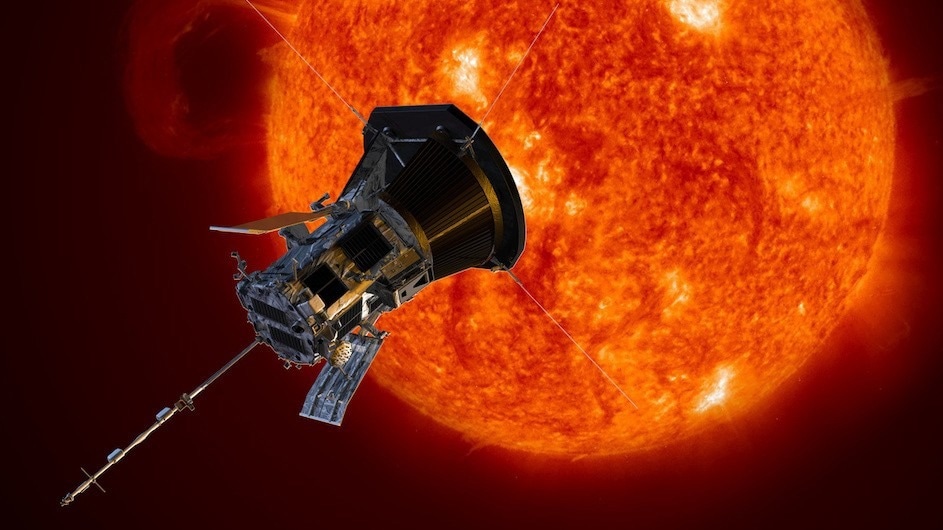Astronauts’ lives are at risk and satellite electronics are destroyed when high-energy particles bombard the earth and objects outside the earth’s atmosphere at unpredictable periods. This confounding issue regarding the weather in space has baffled researchers for decades.
 An artist’s concept of NASA’s Parker Solar Probe observing the Sun. Image Credit: NASA/Johns Hopkins APL/Steve Gribben
An artist’s concept of NASA’s Parker Solar Probe observing the Sun. Image Credit: NASA/Johns Hopkins APL/Steve Gribben
Even stronger radiation showers than those that can reach passengers in aircraft flying over the North Pole can be produced by these flare-ups. Despite their best attempts, scientists have not definitively pinpointed a pattern for how and when flare-ups may occur.
Authors Luca Comisso and Lorenzo Sironi of Columbia’s Department of Astronomy and the Astrophysics Laboratory have used supercomputers for the first time to simulate when and how high-energy particles are raised in complex situations such as that of the sun’s atmosphere. The results were published in The Astrophysical Journal Letters.
This new study opens the door for more precise forecasts of the timing of these particles’ potentially harmful bursts.
This exciting new research will allow us to better predict the origin of solar energetic particles and improve forecasting models of space weather events, a key goal of NASA and other space agencies and governments around the globe.
Luca Comisso, Astronomy, Columbia University
The nearest spacecraft to the sun, NASA’s Parker Solar Probe, may be able to directly observe the expected distribution of high-energy particles produced in the sun’s outer atmosphere in the next few years, he noted, validating the conclusions of the report.
In their paper, Comisso and Sironi show that magnetic fields in the sun’s outer atmosphere can accelerate ions and electrons to speeds nearly equal to the speed of light.
Particles in a plasma state, which is different from liquid, gas, and solid phases and makes up the sun's outer atmosphere and other stars, are very turbulent. The long-held scientific theory states that the sun's plasma produces high-energy particles.
However, because plasma particles travel so irregularly and unpredictably, it has been difficult to adequately explain how and when this happens.
Comisso and Sironi developed computer simulations that depict the precise motions of electrons and ions in the sun’s plasma using supercomputers at Columbia, NASA, and the National Energy Research Scientific Computing Center. The simulations mimic atmospheric conditions on the sun, providing the most up-to-date data on how and when high-energy particles form.
The study offers responses to queries that have been under investigation for at least 70 years, including Enrico Fermi, a physicist who started looking into magnetic fields in space as a possible origin for the high-energy particles (which he dubbed cosmic rays) that were seen entering the earth’s atmosphere in 1949.
Since then, scientists have speculated that the sun's plasma is a significant source of these particles, but it has proven challenging to establish.
The National Science Foundation and NASA funded Comisso and Sironi’s study, which has consequences well beyond the solar system.
Plasma makes up the vast bulk of observable matter in the universe. Since energetic particles are commonly detected in the solar system and other settings throughout the universe, such as the vicinity of black holes and neutron stars, it is essential to comprehend how certain of the plasma’s constituent particles might be accelerated to high energies.
While Comisso and Sironi’s latest paper concentrates on the sun, additional simulations might be performed in various scenarios to determine how and when far-off stars, black holes, and other cosmic objects would produce their energy bursts.
“Our results center on the sun but can also be seen as a starting point to better understanding how high-energy particles are produced in more distant stars and around black holes. We’ve only scratched the surface of what supercomputer simulations can tell us about how these particles are born across the universe,” Comisso said.